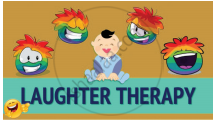Advertisements
Advertisements
प्रश्न
Visit a library:
Find and read stories and poems written by Edith Nesbit.
उत्तर
Instructions for Students:
-
Visit the Library: Go to your school or local library and ask the librarian to help you find books by Edith Nesbit.
-
Stories to Look For:
- The Railway Children: A touching story about three siblings helping others and solving a mystery.
- Five Children and It: A fun adventure about a magical creature that grants wishes.
- The Book of Dragons: Short, exciting stories about dragons.
- The Magic World: A collection of magical and humorous short stories.
-
Poems to Look For:
- Edith Nesbit wrote simple, imaginative poems. Ask for her children’s poetry, such as:
- Spring Song (about the joys of spring).
- The Marching Song (about adventure and bravery).
- Edith Nesbit wrote simple, imaginative poems. Ask for her children’s poetry, such as:
-
Read and Reflect:
- Take notes on the main characters and the magical elements in the stories.
- Think about the message or moral of each story or poem.
संबंधित प्रश्न
What does the word ‘cardboard’ denote in the poem? Why has this word been used?
A small thought, put in action, led to a great achievement. Pick out the lines from the beginning and end of the poem and explain their significance.
A bridge connects people on either side of a river or valleys in cities or villages. Discuss with your partner the importance of a bridge to both the cities and the villages and complete the table.
| Cities | Villages |
Say where . . . . . . .
______ do the cows and sheep stand?
Read the passage and find the verbs used with the following nouns and phrases:
- volcano
- molten rock
- volcanic mountain
- dust
- 165 village and towns
- the wind and the sea
- seeds
- bird
Find out the following with the help of your teacher and the internet.
Rain in countries like the UK which experience spring-summer-autumn-winter.
Describe what the author saw when he went back to the island.
Read the lines and answer the question given below.
Here is a child who clambers and scrambles,
All by himself and gathering brambles;
- Where do you think the child is?
- What does ‘gathering brambles’ mean?
The bird catcher’s clothes were dry.
Now, read the following passage on “Laughter Therapy” and answer the questions that follow.

- Laughing is an excellent way to reduce stress in our lives; it can help you to cope with and survive a stressful life. Laughter provides full-scale support for your muscles and unleashes a rush of stress-busting endorphins. Since our bodies cannot distinguish between real and fake laughter, anything that makes you giggle will have a positive impact.
- Laughter Therapy aims to get people laughing, in groups and individual sessions and can help reduce stress, make people and employees happier and more committed, as well as improve their interpersonal skills. This laughter comes from the body and not the mind.
- Laughter Yoga (Hasya yoga) is a practice involving prolonged voluntary laughter. It aims to get people laughing in groups. It is practiced in the early mornings in open-parks. It has been made popular as an exercise routine developed by Indian physician Madan Kataria, who writes about the practice in his 2002 book ‘Laugh for no reason'. Laughter Yoga is based on the belief that voluntary laughter provides the same physiological as well as psychological benefits as spontaneous laughter.
- Laughter yoga session may start with gentle warm-up techniques which include stretching, chanting, clapping, eye contact and body movements to help break down inhibitions and encourage a sense of playfulness. Moreover, laughter is the best medicine. Breathing exercises are used to prepare the lungs for laughter followed by a series of laughter exercises that combine a method of acting and visualization techniques. Twenty minutes of laughter is sufficient to augment physiological development.
- A handful of small-scale scientific studies have indicated that laughter yoga has some medically beneficial effects, including cardiovascular health and mood. This therapy has proved to be good for depressed patients. This laughter therapy also plays a crucial role in social bonding.
Answer the following.
a. How does laughter help one to cope with stress?
b. Which word in the text (para 2) means the same as ‘dedicated'?
c. Why do you think voluntary laughter provides the same physiological as well as psychological benefits as spontaneous laughter?
d. ‘Laughter is the best medicine’. Explain.
e. Given below is a set of activities. Which of these are followed in the ‘Laughter Yoga’ technique?
- sitting on the ground with legs crossed
- body movements
- clapping
- closed eyes
- breathing exercises
- chanting
- stretching of arms and legs
- bending backwards
- running/jogging
- eye contact
f. ‘Laughter therapy also plays a crucial role in social bonding’. How?
